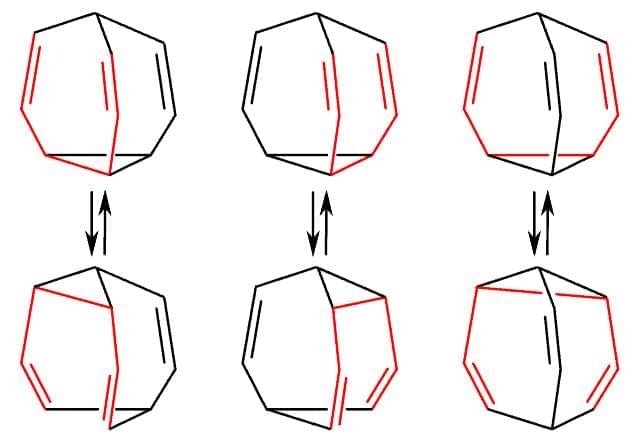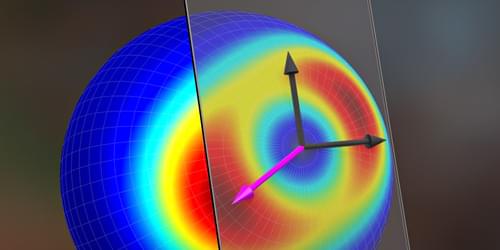Researchers detect and control how a single piezoresisitive molecule changes shape when a mechanical force is applied to it.




A German-French research team led by Bayreuth microbiologist Dirk Schüler presents new findings on the functionality of proteins in magnetic bacteria in the journal mBio. The research is based on previous results published recently in the same journal.
In this study, the Bayreuth scientists used bacteria of the species Magnetospirillum gryphiswaldense to decipher the function of genes that are presumably involved in the biosynthesis of magnetosomes in other magnetic bacteria that are difficult to access.
Magnetic bacteria contain magnetic particles consisting of nanocrystals of an iron mineral inside their cells. These organelle-like particles are known in research as magnetosomes. Like links in a chain, well over 20 of these particles are regularly lined up one after the other. The magnetic moments of the individual crystals add up so that the chain—similar to a compass needle—has the function of a magnetic sensor: It aligns the bacterial cell in the relatively weak magnetic field of the Earth.

One of the biggest challenges for earthquake early warning systems (EEW) is the lack of seismic stations located offshore of heavily populated coastlines, where some of the world’s most seismically active regions are located.
In a new study published in The Seismic Record, researchers show how unused telecommunications fiber optic cable can be transformed for offshore EEW.
Jiuxun Yin, a Caltech researcher now at SLB, and colleagues used 50 kilometers of a submarine telecom cable running between the United States and Chile, sampling seismic data at 8,960 channels along the cable for four days. The technique, called Distributed Acoustic Sensing or DAS, uses the tiny internal flaws in a long optical fiber as thousands of seismic sensors.

A new method identifies the most sensitive measurement that can be performed using a given quantum state, knowledge key for designing improved quantum sensors.
A quantum sensor is a device that can leverage quantum behaviors, such as quantum entanglement, coherence, and superposition, to enhance the measurement capabilities of a classical detector [1–5]. For example, the LIGO gravitational-wave detector employs entangled states of light to improve the distance-measurement capabilities of its interferometer arms, allowing the detection of distance changes 10,000 times smaller than the width of a proton. Typically, quantum sensors use systems prepared in special quantum states known as probe states. Finding the ideal probe state for a given measurement is a focus of many research endeavors. Now Jarrod Reilly of the University of Colorado Boulder and his colleagues have developed a new framework for optimizing this search [6].

Year 2022 This toilet looks promising essentially turning waste into ashes.
Billionaire Bill Gates has partnered with electronics company Samsung to create a prototype waterless toilet for household use that turns solid waste into ashes.
The toilet was developed as part of the Bill & Melinda Gates Foundation’s Reinvent the Toilet Challenge – an initiative that started in 2011 that sought proposals for toilets that safely and effectively manage human waste.
The Microsoft founder worked with the research and development arm of Samsung Electronics to design the waterless toilet, which uses heat-treatment and bioprocessing technologies to kill pathogens found in human waste.

In cybersecurity, “threat data feeds” and “threat intelligence” are often used interchangeably. They are, however, quite different. To make matters worse, the term “threat intelligence” has been co-opted and watered down by vendors, making it even more difficult to define the difference between threat data feeds and threat intelligence.
An easy, and accessible, way to tell the difference is to think about weather forecasts. National TV news shows present a forecast for the entire country. You might get some useful information from this, but usually you just get an idea of what the weather is like nationwide. Local weather, however, drills down into the expected conditions for your specific area — not only temperature and weather, but also wind speed, barometric pressure, times for weather changes, and so on. You can use this information to plan out your actions for the next few days.
Using the weather forecast analogy, threat data feeds provide a high-level view of the security landscape. For example, it is useful to know that there is a vulnerability in a specific type of software, but it can be relatively trivial if that software is not in use at your organization. Likewise, knowing which threat groups are active is useful information, but how do you know if they are targeting your sector or organization and what processes and tools they are using?

I wondered when this would happen. Reminds me of the video game “The Last of Us” and there’s a TV series as well. I’m sure they’ll stop it though.
Silver leaf disease is a curse for a variety of botanicals, from pears to roses to rhododendron. Infecting their leaves and branches, the fungus Chondrostereum purpureum can be fatal for the plant if not quickly treated.
Aside from the risk of losing the occasional rose bush, the fungal disease has never been considered a problem for humans. Until this year.
In what researchers suggest is the first reported case of its kind, a 61-year-old Indian mycologist appears to have contracted a rather serious case of silver leaf disease in his own throat, providing a rare example of a pathogen seemingly making an enormous leap across entire kingdoms in the tree of life.

😗😁😘 Year 2022
Electricity can be streamed wirelessly across a room through thin air, researchers have found.
Scientists from Seoul, South Korea, have figured out how to transmit 400 milliwatts (mW) of electricity over nearly 100 feet using infrared laser light, according to research published in the journal Optics Express.
“The ability to power devices wirelessly could eliminate the need to carry around power cables for our phones or tablets,” research team leader Jinyong Ha from Sejong University in South Korea said in a statement. “It could also power various sensors such as those used for monitoring processes in manufacturing plants.”

The properties of nanoribbon edges are important for their applications in electronic devices, sensors, and catalysts. A group of scientists from Japan and China studied the mechanical response of single-layer molybdenum disulfide nanoribbons with armchair edges using in situ transmission electron microscopy.
They showed that the nanoribbon Young’s modulus varied inversely with its width below the width of 3nm, indicating a higher bond stiffness for the armchair edges. Their work, published in the journal Advanced Science, was co-authored by Associate Professor Kenta Hongo and Professor Ryo Maezono from JAIST and Lecturer Chunmeng Liu and Lecturer Jiaqi Zhang from Zhengzhou University, China.
Sensors have become ubiquitous in the modern world, with applications ranging from detecting explosives, measuring physiological spikes of glucose or cortisol non-invasively to estimating greenhouse gas levels in the atmosphere.